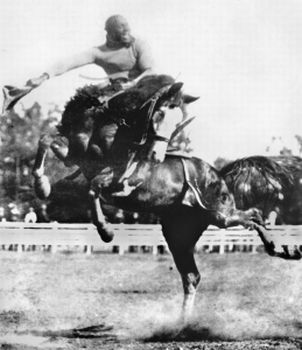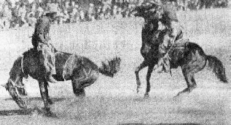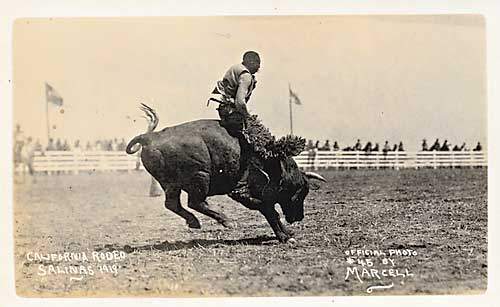
Happy Tuesday POU!
Today we feature the bronco riding Jesse Stahl.
Born in Tennessee, Jesse Stahl, was an inductee into the Cowboy Hall of Fame in Oklahoma City. He was a major saddle bronco rider. Although exceptionally talented, Stahl seldom placed higher than third at the major rodeos mainly because he was Black. At one rodeo where he’d clearly bested his competitors, Stahl was awarded second place. Perhaps to mock the judges, he rode a second bronco while facing backward.
Stahl is most famous for his performance at the Salinas Rodeo in California in 1912. Before over 4,000 fans, Stahl stole the show in the rodeo’s classic event of saddle bronc riding on a previously un-ridden bucking bronco called “Glass Eye”. The horse would buck, twist his body 180-degrees midair, and land in the exact opposite direction. Most observers felt that none other than Stahl stood a chance of staying on Glass Eye. He did, and that magnificent ride thrilled fans and cemented Stahl’s name into the annals of rodeo fame. Other stories of Stahl’s exploits have been passed down through oral tradition.
He repeated his triumph by riding another notorious bucker, “Tar Baby,” backwards with a suitcase in his hand. Stahl invented the rodeo technique of “hoolihanding,” literally leaping from a horse onto the back of a 2,000-pound bull, grabbing its horns, overpowering the animal, and rooting it into the ground tethered by its horns. He wowed sellout audiences with his bravery and exceptional performances until hoolihanding was outlawed. With his reputation growing as one of the great performance riders of the West, Stahl was a contract headliner at rodeo expositions all over the country. His popular “suicide rides” performances, where he and fellow rodeo performer Ty Stokes rode a bucking horse sitting back-to-back, drew huge crowds.
Some white cowboys refused to enter a rodeo to compete against Jesse Stahl; his reputation preceded him. Since rodeo promoters knew that crowds came to see him, they found a way to secure him. The promoters sometimes asked Jesse not to compete, but to instead give expositions demonstrating his prowess and skills. Stahl, therefore, was compensated for his performances and paid handsomely as a contract performer, rather than a contest participant.
Jesse Stahl retired in 1929 and died in Sacramento, California in 1935. He is remembered today as a peerless roughrider. He was posthumously inducted into Oklahoma City’s Rodeo Hall of Fame in 1979, only the second black cowboy (after Bill Pickett) to receive that honor.



